-
Out of stock
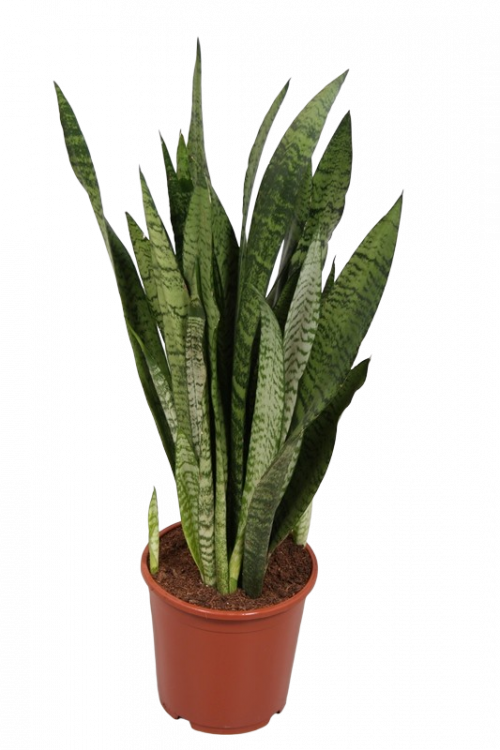 The Sanseveria zeylanica is almost indestructible and suitable for people who love separate modern forms. The Sanseveria is also an air-purifying plant and improves the humidity and creates a healthy atmosphere for body and soul. ~ 50 cm in height
The Sanseveria zeylanica is almost indestructible and suitable for people who love separate modern forms. The Sanseveria is also an air-purifying plant and improves the humidity and creates a healthy atmosphere for body and soul. ~ 50 cm in height -
Out of stock
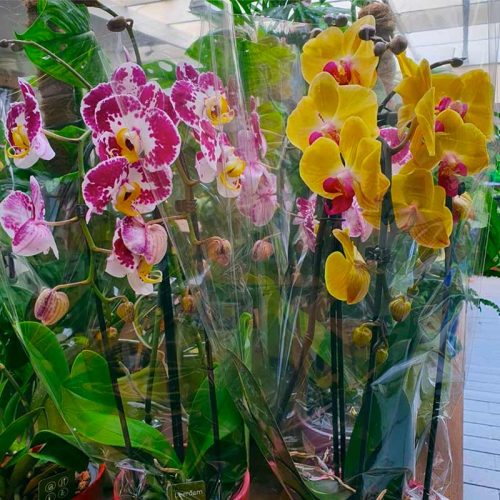
- Position: bright but indirect light
- Soil: these plants do not need to grow in compost, but if potting up, use a specialist orchid compost
- Rate of growth: average
- Hardiness: tender (indoors only)
- Current height: plant approximately 55 cm
- Home care:Keep the compost moist during the warmer months, but in winter you should reduce the amount it gets, and only water them occasionally. Ideally when watering, you should let them stand in a tray of water (or kitchen sink) so they can soak up as much as they like for an hour or two. Afterwards, let the excess water drain away completely. It is always best to give them a a good soak when they get quite dry, rather than watering little and often. Their preference is for soft, tepid water. They love humidity, so a bright kitchen or bathroom would be ideal, and mist the leaves with water occasionally, especially if they are in a heated room. Don't worry if the roots grow outside the pot, in their native environment, they grow in the crooks of branches, and use these aerial roots to absorb water from the air. They do not mind being overcrowded in their pots, so you only need to repot them when the growth starts to suffer. They usually only send up flower spikes once a year, however you may encourage a second flush of flowers to form more quickly if you trim back the stem to just above the first node immediately after they have finished flowering.
-
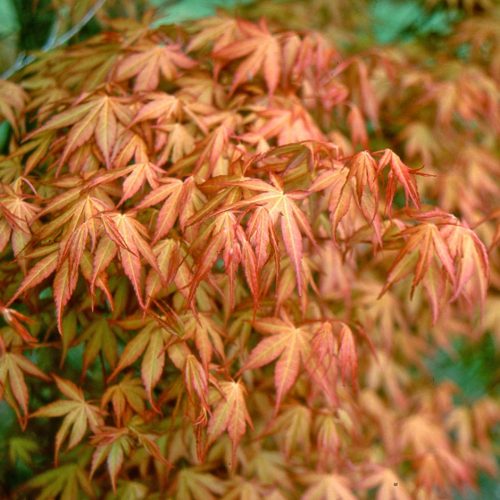 Acer Katsura is a stunning maple with beautiful orange - yellow leaves tinged with a reddish hue that change colour throughout the season. This deciduous variety looks stunning all spring, summer and especially in autumn. Pot size: 3L Position: full sun (but not south-facing) Soil: fertile, moist, well-drained neutral to acid soil Rate of growth: slow-growing Flowering period: April to May Hardiness: fully hardy Garden care: Add a top-dressing of a well-balanced fertiliser around the base of a recently planted tree in late spring and keep it well watered. No routine pruning is required, just remove any dead, damaged or crossing branches in late autumn or winter when they are fully dormant. Eventual Height: 4m Eventual Spread: 4m
Acer Katsura is a stunning maple with beautiful orange - yellow leaves tinged with a reddish hue that change colour throughout the season. This deciduous variety looks stunning all spring, summer and especially in autumn. Pot size: 3L Position: full sun (but not south-facing) Soil: fertile, moist, well-drained neutral to acid soil Rate of growth: slow-growing Flowering period: April to May Hardiness: fully hardy Garden care: Add a top-dressing of a well-balanced fertiliser around the base of a recently planted tree in late spring and keep it well watered. No routine pruning is required, just remove any dead, damaged or crossing branches in late autumn or winter when they are fully dormant. Eventual Height: 4m Eventual Spread: 4m -
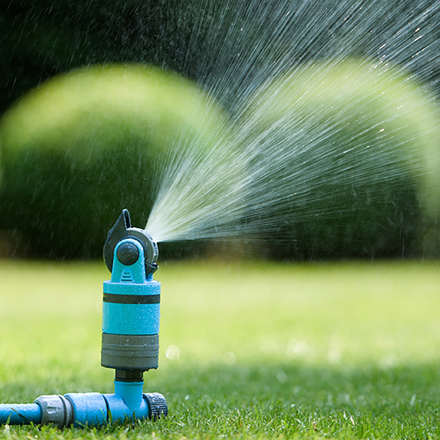
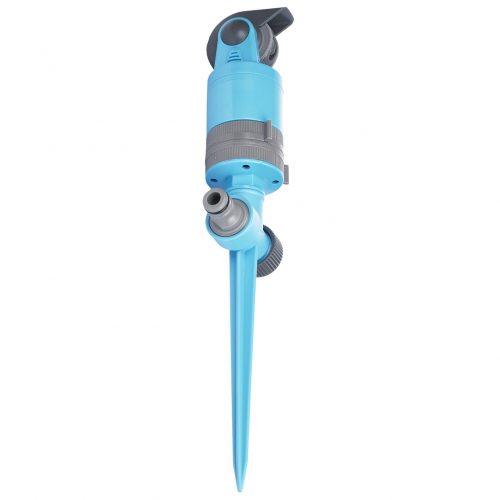 Adjustable sprinkler with 4 spray patterns – modular and extendable Ground spike adjustable sprinkler with 4 patterns. High performance and robust – efficiently water grass and established plants. Max area coverage 314m2. The sprinkler allows a snap fit to all watering brands. Sprinkler features: 4 spray patterns with variable water angles Part of a modular system that can be extended with more sprinklers Durable ground spike for use in lawns and borders Made from premium grade plastic Sprinkler specification: Diameter: 20 m Coverage: 314 m2
Adjustable sprinkler with 4 spray patterns – modular and extendable Ground spike adjustable sprinkler with 4 patterns. High performance and robust – efficiently water grass and established plants. Max area coverage 314m2. The sprinkler allows a snap fit to all watering brands. Sprinkler features: 4 spray patterns with variable water angles Part of a modular system that can be extended with more sprinklers Durable ground spike for use in lawns and borders Made from premium grade plastic Sprinkler specification: Diameter: 20 m Coverage: 314 m2 -
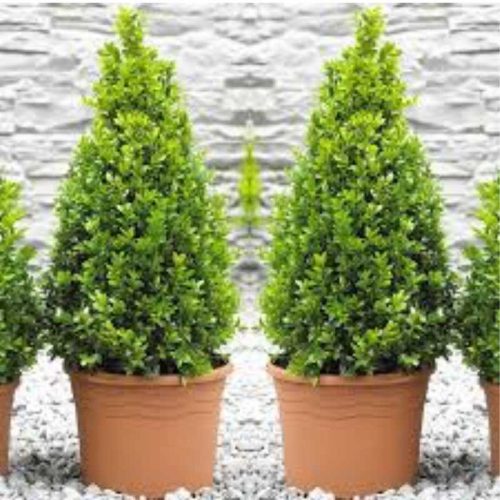
- Position: partial shade
- Soil: fertile, well-drained soil
- Rate of growth: slow-growing
- Hardiness: fully hardy A pair of these tightly clipped box spheres look great flanking a set of steps, a doorway or a path. One of our recommended plants, they're perfect for planting in a large terracotta pot in a partially shady site, where the glossy, dark-green leaves provide all year foliage, interest and structure. Box are happy growing in a sunnier spot, but the combination of dry soil and full sun may encourage poor growth and leaf scorching. If you have sandy soil it is best to keep them in a partially shady spot in the garden.
- Garden care: Ensure that the soil or compost is never allowed to dry out. Trim plants grown as hedges or topiary in mid- or late summer. If you want to maintain a really precise outline, then you can clip it twice a year - once in June, and then again in August/September. Apply a top-dressing of a balanced slow-release fertiliser such as blood, fish and bone (organic) or Growmore (inorganic) around the base of the plant in spring, making sure that none touches the leaves or stems.
-
Out of stock
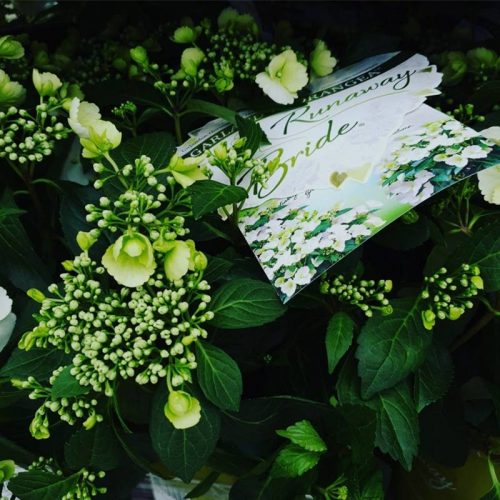 Hydrangea macrophylla Runaway Bride is a compact, small to medium-sized, vigorous, deciduous shrub, extremely floriferous, with a rounded habit and semi-trailing stems. Unusually for a hydrangea, it flowers all the way along the stems instead of just at the tips, giving it the name of Garland Hydrangea. The ovate, serrated leaves are deep green. From May to September, the shrub is covered with a profusion of pure white lace-cap flowers, often with a pale pink flush as they age; the colour is constant whatever the pH of your soil. Hydrangea Runaway Bride is excellent in large containers along a house-frontage, as well as in a border. Soil: Any moist but well-drained soil, acid to neutral preferred Position: Partial shade Season of interest: Late spring to early autumn Hardiness: Fully hardy Height: 4’ (1.2m) Spread: 4’ (1.2m)
Hydrangea macrophylla Runaway Bride is a compact, small to medium-sized, vigorous, deciduous shrub, extremely floriferous, with a rounded habit and semi-trailing stems. Unusually for a hydrangea, it flowers all the way along the stems instead of just at the tips, giving it the name of Garland Hydrangea. The ovate, serrated leaves are deep green. From May to September, the shrub is covered with a profusion of pure white lace-cap flowers, often with a pale pink flush as they age; the colour is constant whatever the pH of your soil. Hydrangea Runaway Bride is excellent in large containers along a house-frontage, as well as in a border. Soil: Any moist but well-drained soil, acid to neutral preferred Position: Partial shade Season of interest: Late spring to early autumn Hardiness: Fully hardy Height: 4’ (1.2m) Spread: 4’ (1.2m) -
Out of stock

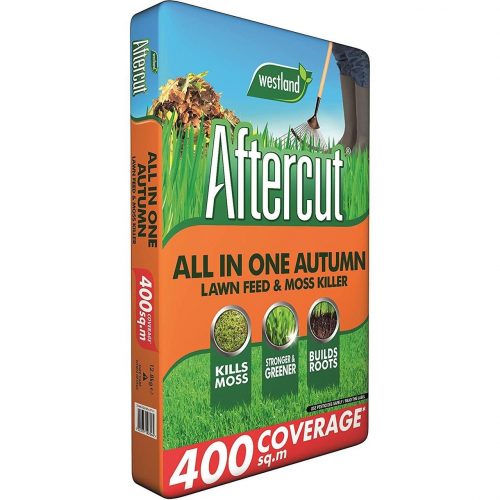 Aftercut All in One Autumn has been specially formulated to control moss and keep your lawn strong and healthy over the winter months.
Aftercut All in One Autumn has been specially formulated to control moss and keep your lawn strong and healthy over the winter months.- Kills moss effectively
- Greens, feeds & conditions
- Stronger root system to improve nutrient uptake
- Produces a hard wearing lawn to withstand the winter months
- NPK 4-5-15
- Iron will kill the moss, creating less competition and healthier, stronger lawn to withstand winter stress conditions
- Potassium helps to move the energy to the roots for essential storage over the winter months
- The right amount of nitrogen will green up your lawn while avoiding excessive growth prior to winter
What to Expect
- After 7 DAYS the lawn will become greener
- Moss will blacken as it dies (any blackening of the grass is only temporary)
- Re-treatment may be necessary for heavy moss infestation or if moss returns re-treat 6 weeks later
- NPK 4-5-15 – Contains Iron Sulphate Heptahydrate
-
Out of stock
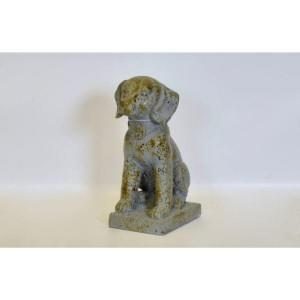
- Lightweight garden ornament
- Made in China
- Available in different sizes
- Life-like pieces
- Beautiful addition to any garden, patio, balcony
- Beautiful product
- Length: 23 cm
- Depth: 36 cm
- Height: 36 cm
-
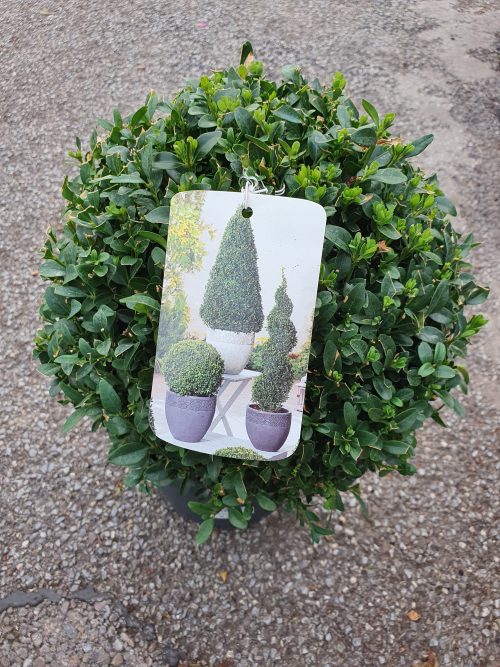
- Position: partial shade
- Soil: fertile, well-drained soil
- Rate of growth: slow-growing
- Hardiness: fully hardyA pair of these tightly clipped box spheres look great flanking a set of steps, a doorway or a path. One of our recommended plants, they're perfect for planting in a large terracotta pot in a partially shady site, where the glossy, dark-green leaves provide all year foliage, interest and structure. Box are happy growing in a sunnier spot, but the combination of dry soil and full sun may encourage poor growth and leaf scorching. If you have sandy soil it is best to keep them in a partially shady spot in the garden.
- Garden care: Ensure that the soil or compost is never allowed to dry out. Trim plants grown as hedges or topiary in mid- or late summer. If you want to maintain a really precise outline, then you can clip it twice a year - once in June, and then again in August/September. Apply a top-dressing of a balanced slow-release fertiliser such as blood, fish and bone (organic) or Growmore (inorganic) around the base of the plant in spring, making sure that none touches the leaves or stems.
-
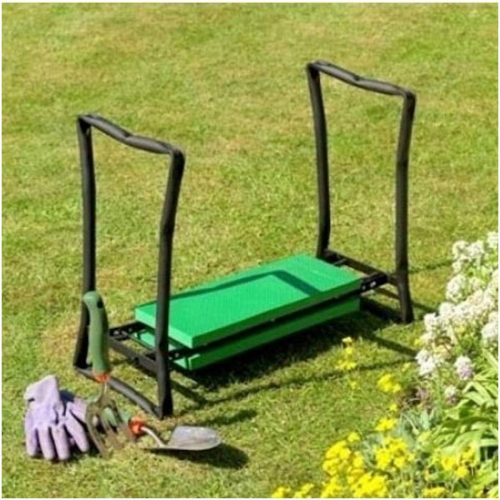
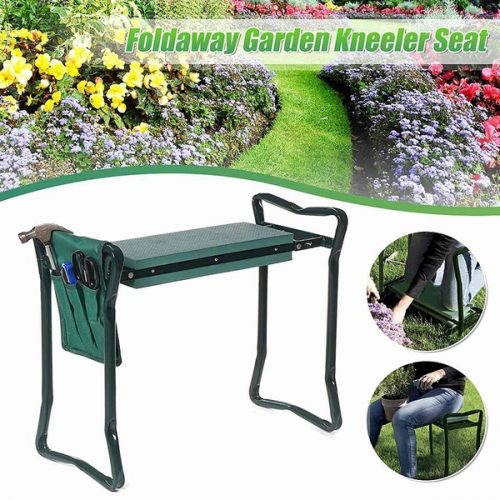
- Long reach tool for picking up items without the need to bend •Lightweight and durable •Made with rust proof aluminium Product Dimensions 68.2 x 27.4 x 14.6 cm ; 3.19 Kg
-
Out of stock
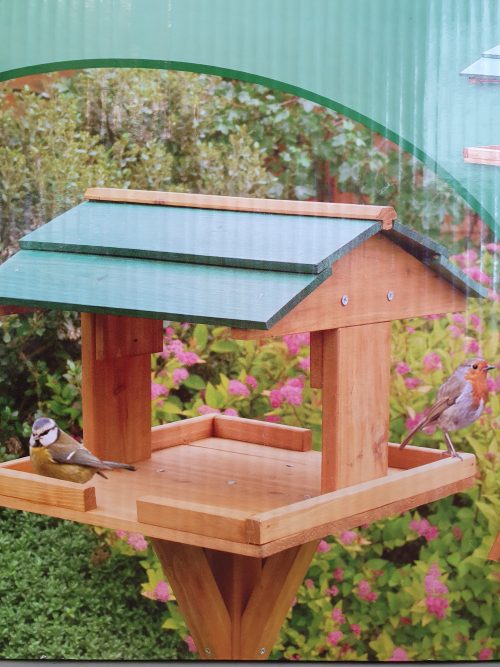
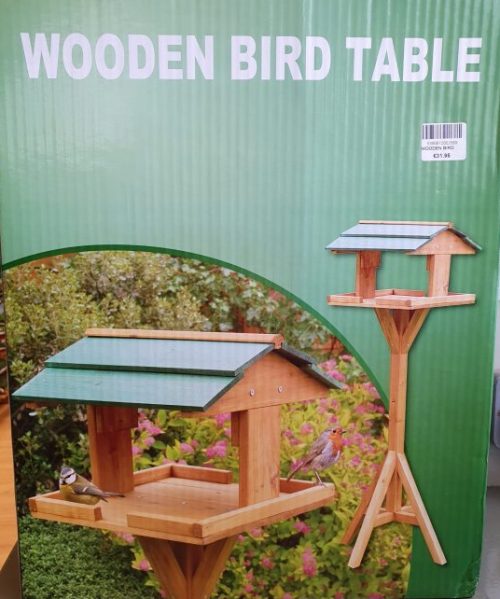 Where to Site
Where to Site- Site your bird table 2 metres from cover, such as trees or shrubs, making it visible, whilst providing a safe place to retreat
- Put out food at the start of the day to ensure that birds can replace the energy they have lost overnight
- 116 cm x 34 cm
-
Out of stock
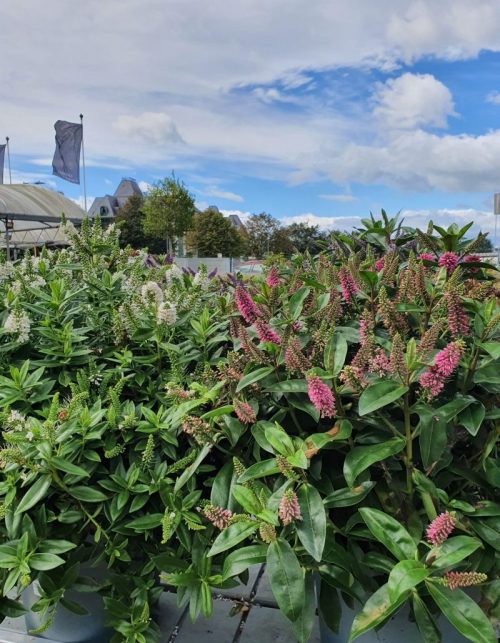 Hebe (Evergreen Veronica) is an easy to grow flowering evergreen shrub native to New Zealand and South America. Hebe plants come in many sizes ranging from dwarf shrubs, suitable for planting in patio pots and rockeries, to large hebe plants that are perfect for planting in a large garden. Many varieties of Hebe flower throughout summer and autumn - some varieties of Hebe flower during the winter. Although mostly hardy, a cold English winter can kill some types of Hebe plants. Hebes especially need to be protected from strong winds. The variegated-leafed Hebes seem to be amongst those most affected by cold winds and wintery weather. Hebes are easy to propagate from cuttings.
Hebe (Evergreen Veronica) is an easy to grow flowering evergreen shrub native to New Zealand and South America. Hebe plants come in many sizes ranging from dwarf shrubs, suitable for planting in patio pots and rockeries, to large hebe plants that are perfect for planting in a large garden. Many varieties of Hebe flower throughout summer and autumn - some varieties of Hebe flower during the winter. Although mostly hardy, a cold English winter can kill some types of Hebe plants. Hebes especially need to be protected from strong winds. The variegated-leafed Hebes seem to be amongst those most affected by cold winds and wintery weather. Hebes are easy to propagate from cuttings.FLOWERS ON A HEBE PLANT
The flowers on a Hebe shrub are small and grouped together in spikes. The colours of Hebe flowers range from white through pink, blue, lilac and purple to bright crimsons.
FOLIAGE
The leaves provide attractive year round foliage with different colours including silver and green, grey, violet, burgundy, bronze and red.BUTTERFLIES
This delightful shrub has flowers which will attract butterflies and bees to your garden.WHERE TO PLANT A HEBE SHRUB
A Hebe is a good all year round foliage plant. Its flowers can provide colour throughout all growing seasons. Grown in mixed plantings of summer annuals the flowers of a Hebe add to the floral display whilst the shape and form of the bush give a sense of stability. Hebe can be grown as an informal hedge - but if clipped back too hard it will not produce so many flowers. The smaller hebes make good ground cover plants or add interest to a rockery. A Hebe should be planted in a well drained soil and, if possible, in a position protected from wind.HOW TO PLANT A HEBE
- Before planting a Hebe soak the roots in water
- Dig a hole twice as wide as the container that the Hebe is in.
- Add a spadeful of compost and some general purpose fertiliser to the soil taken from the hole that you have dug.
- Remove the plant from the pot - tap the sides and base of the container to release the Hebe.
- Place the hebe plant into the hole.
- Fill in the space around the plant with the soil and compost mixture and gently firm with your fingers or tread in.
- Water in with plenty of water.
- Mulch around the base of the plant to help to conserve moisture.